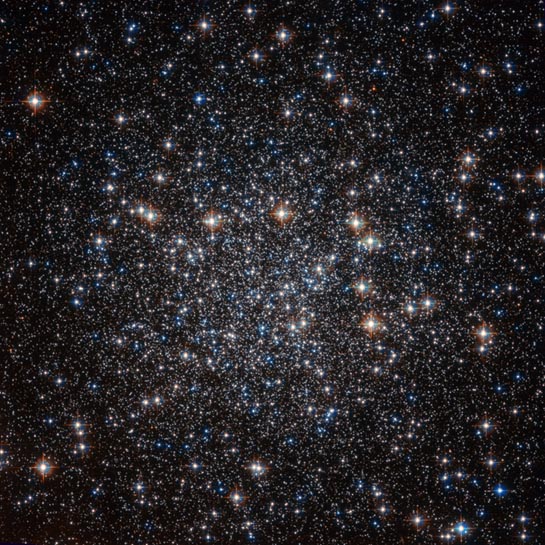
Globular Cluster
RA 12h 59m 34.34s Dec -70° 52' 28.89"
Musca
22000 light years
7.8
13.5'
3.47 x 3.42 arcminutes
North is 25.6° right of vertical
ESA/Hubble and NASA
August 1, 2016
ABOUT THIS IMAGE:
Located approximately 22 000 light-years away in the constellation of Musca (The Fly), this tightly packed collection of stars - known as a globular cluster - goes by the name of NGC 4833. This NASA/ESA Hubble Space Telescope image shows the dazzling stellar group in all its glory.
NGC 4833 is one of the over 150 globular clusters known to reside within the Milky Way. These objects are thought to contain some of the oldest stars in our galaxy. Studying these ancient cosmic clusters can help astronomers to unravel how a galaxy formed and evolved, and give an idea of the galaxy's age.
Globular
clusters are responsible for some of the most striking sights in the cosmos,
with hundreds of thousands of stars congregating in the same region of
space. Hubble has observed many of these clusters during its time in orbit
around our planet, each as breathtaking as the last.
From Wikipedia:
NGC 4833 is a globular cluster discovered by Abbe Lacaille during his 1751-1752 journey to South Africa, and catalogued in 1755. It was subsequently observed and catalogued by James Dunlop and Sir John Herschel whose instruments could resolve it into individual stars.
The
globular cluster is situated in the very southerly constellation Musca
at a distance of 21,200 light years from Earth. It is partially obscured
by a dusty region of the galactic plane. After corrections for the reddening
by dust, evidence was obtained that it is in the order of 2 billion years
older than globular clusters M5 or M92.